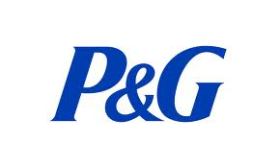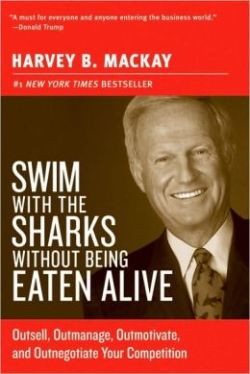Archive
Inside Man. Outside Man. Successful Transitions.
Last few days has seen the return of two former leaders.
AG Lafley returned to take over from Bob McDonald as head of P&G.
NR Narayanamurthy returned to lead Infosys. 
As I read the backstories I was reminded of a book I read a long long time ago by Harvey Mackay, called Swim with the Sharks Without Being Eaten Alive. 
Among many things he suggests that successful companies must have 2 leaders with clearly defined roles.
One is the outside man. He is the face of the company, he, or she, paints the vision, Is the Pied Piper.
The other is the inside man. He is the oil that keeps the machine ticking. He makes things happen. Converts vision to reality.
I don’t know that there is need for two people, but I do know that these are two distinct roles and sometimes you do need two different people. Sometimes people are blessed to be able to do both. But for starters it is important that these two roles are recognised.
Let’s look at the most successful company of recent times. Apple. Jobs was the outside man. Cook was the inside man.
At P&G too from what I understand Lafley was the outside man, McDonald was the inside man.
At Infosys too Narayanamurthy was the outside man, while Nilekani was the inside man.
Simple so far?
The challenge is when the Outside Man moves on and the Inside Man becomes the outside man.(Usually Outside Men tend to be chairmen, CEOs etc while Inside Men tend to be COOs, Directors, VPs etc.)
Sometimes Inside Men become good Outside Men. Nandan Nilekani is a great example.
Larry Page seems to be doing well, taking over from Schmidt.
Companies that transition at the top could struggle for one of three reasons.
- The Inside Man is not a good Outside Man. Cook at Apple is struggling big time. He is not an Outside Man sort of guy. That affects the brand and share price in the short term, and the company’s future itself in the long term.
- There is no new Inside Man. When the Inside Man becomes the Outside Man, he needs to ensure he has a good Inside Man making him look good. I believe Brin is doing that job at Google.
- The Inside Man continues to behave like an Inside Man and meddles with the company operations and loses sight of the bigger picture and takes his hand off the wheel. I have worked with such people!!
Now looking at the companies that I started with : P&G and Infosys, I wonder if McDonald had a new wingman who was his Inside Man making his vision come true. Or if McDonald was just a poor Outside Man.
In the case of Infosys when Narayanamurthy was around he had some very good Inside Men, led my Nandan Nilekani. When Nilekani became the Outside Man, he still had Pai, Kris and Shibulal. But as that lot left, Shibulal was left to his own devices. He is not an Outside Man sort of guy. I don’t believe he had a good Inside Man either.
So as Lafley and Narayanamurthy come back they would do well to remember that they need to ensure that they transition to not just a great Outside Man, but also make sure that that person has a great Inside Man. That is the secret of a successful transition.
As I end this I am reminded of a great political Inside/Outside pair. Blair and Gordon.
One difference between Unilever and Google
Many, many years ago I worked on the Unilever business and learnt a little bit about the way they work. ( I hope I am outside the statute of limitations wrt sharing what I learnt. It was 20 years ago!!)
Specifically bringing a new product to market.
It all starts off with someone somewhere unearthing an opportunity eg in some focus group a stray comment that ‘ today school uniforms are mostly blue so who needs a detergent that washes white as snow’.
A smart person will pick that up and say ‘why don’t we launch a product that keeps blue blue?’
Many months of R&D activity will ensue and finally they will have created a product that keeps blue clothes blue.
Then it moves along to market testing of various types from sizing to concept testing.
Finally, when they have everything right a test market is chosen. This is an important part of the process and a market that represents the national market and can be isolated from a media stand point is chosen.
Then the product goes into test launch. Parameters studied and then the product is launched. Or not.
That extremely simplistically speaking, is the Unilever (and P&G and Colgate and Nestle and pretty much any FMCG) process.
Now let’s turn to Google. Specifically Google+.
This is one product whose launch/test pilot is very recent and I watched pretty closely.
Firstly their product was launched with an eye on competition viz Facebook.
Some of the obvious areas they focused on were
It is odd to have someone’s b’day party picture, next to an article on the US economy next to one about the fires in Texas. So let’s create circles for people to focus their broadcast/reception.
Why limit connectivity to text. So let’s Huddle over a video chat.
And so on.
They followed their process to arrive at a product they were happy with.
So far, to my mind, Unilever and Google have followed a scientific, well thought out process to get to a product they were happy with.
Now they diverge.
To launch Google+, Google chose a nifty idea of limited distribution creating huge interest and desire. Remember Gmail did the same thing.
But in execution terms they went after power users. So those who got on to Google+ first were the techies.
So initially the Google+ stream was full off stuff to do with Google+.
The next level of entrants were the social media folks who talked about social media and the cool stuff they were doing.
Not to forget that invites were still being distributed rather sparingly.
Somehow someone who didn’t fit in the above groups got an invite and posted a bunch of animated gifs of cats. That didn’t go down well and seemed extremely out of place given everything else going on in the stream.
The stream has reverted to being a whole lot of left brain driven activity.
I don’t know Google+’s plans and how they plan to roll this out but I was struck with the stark difference between the test market approach of Google compared to most marketers.
For eg : I don’t know that P&G launching a shampoo would test market it amongst salons before launching to the public.
I understand that in the tech fraternity there is a practise of launching the beta to a bunch of techies to power use it before a release. This, I believe, is to iron out any bugs before the end user gets it.
But Google+ is less of a tech product and more of a mass brand. I wonder if they couldn’t have taken a leaf out of a marketer’s book and launched the product that represented their end customer segment a bit more.
So still do selective invites but distribute amongst teenagers, moms, grandfathers, geeks, social media hogs etc.. Stratified in some proportion to users. They do have the contact and demographic details of these folks from Gmail. If that is construed as invasion of privacy, creative ways to reach this lot is just a click away.
By doing this they get a wide variety of people to use the product. Watch them use it. Learn how the different segments are playing with it. Course correct and launch widely a product that has been tested by different segments.
I repeat that I don’t know Google’s marketing strategy and they are better marketers than I can hope to be, so there will be good reasons for them to do what they do.
From an outsider’s POV I found the difference in the go to market strategy between Unilever and Google rather striking. So this blog…
Pampers case study from China
This is a great story of how P&G learned from failure and invested in getting customer insights to create a success in China for their diapers.
Pampers is a global brand, but obviously believes that global brands need to be built on local foundations. As long as the essence of the brand is maintained local communication generates significantly greater returns than the savings in running global, read English, ads everywhere.
All the more important that the brand story is clearly defined so that the integrity is maintained universally.
Another example of P&G’s dedication to brands and their consumers.
Wear Pampers. Sleep better. So simple. So true.